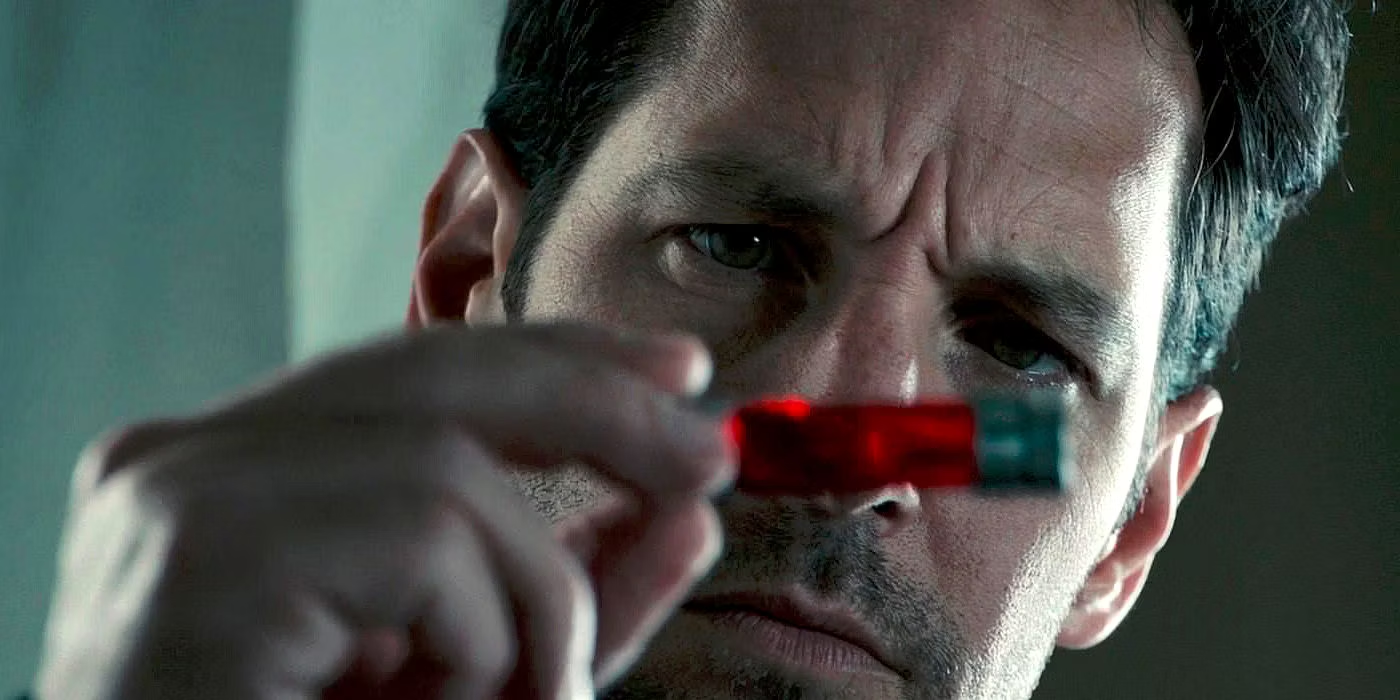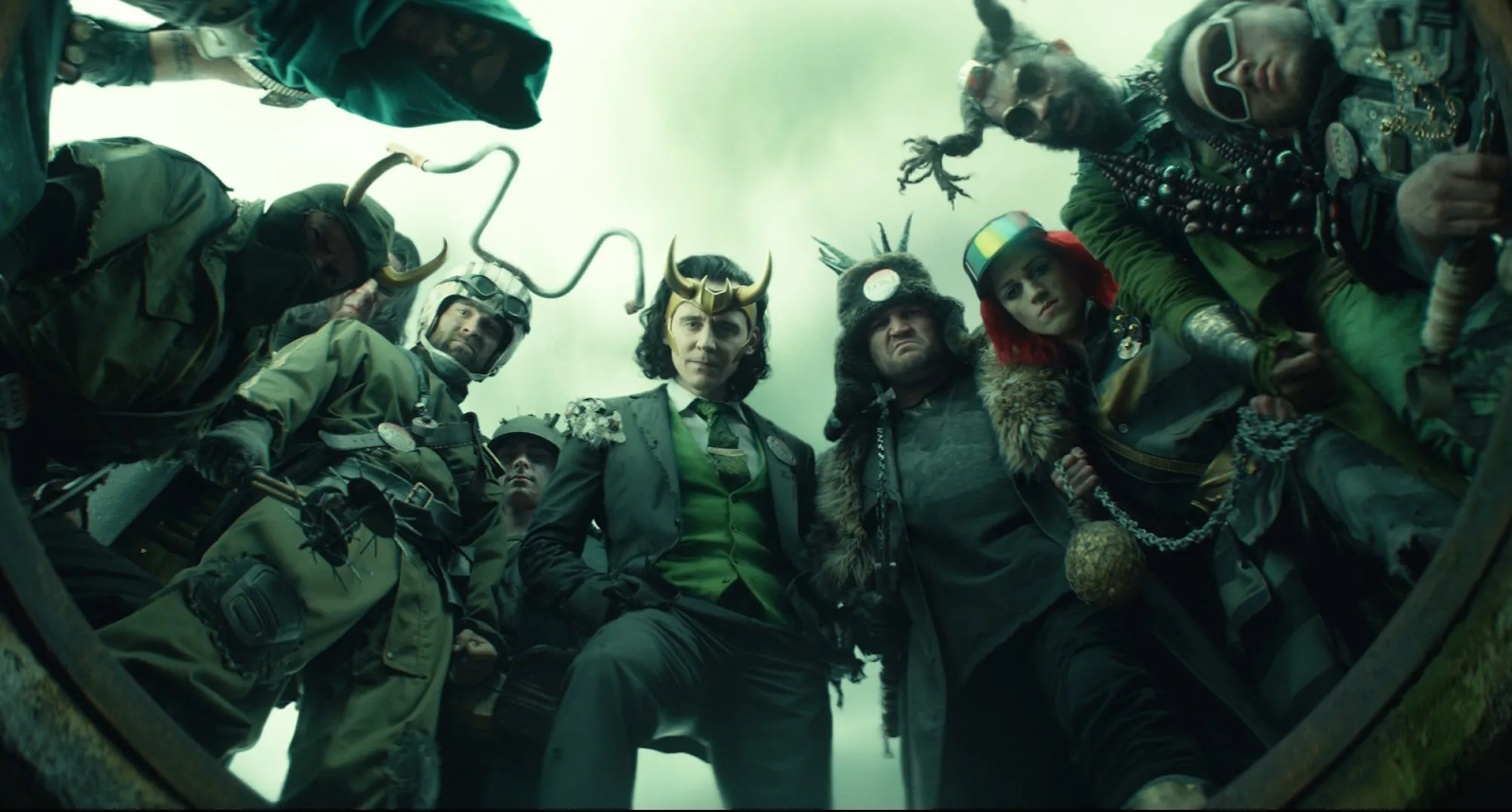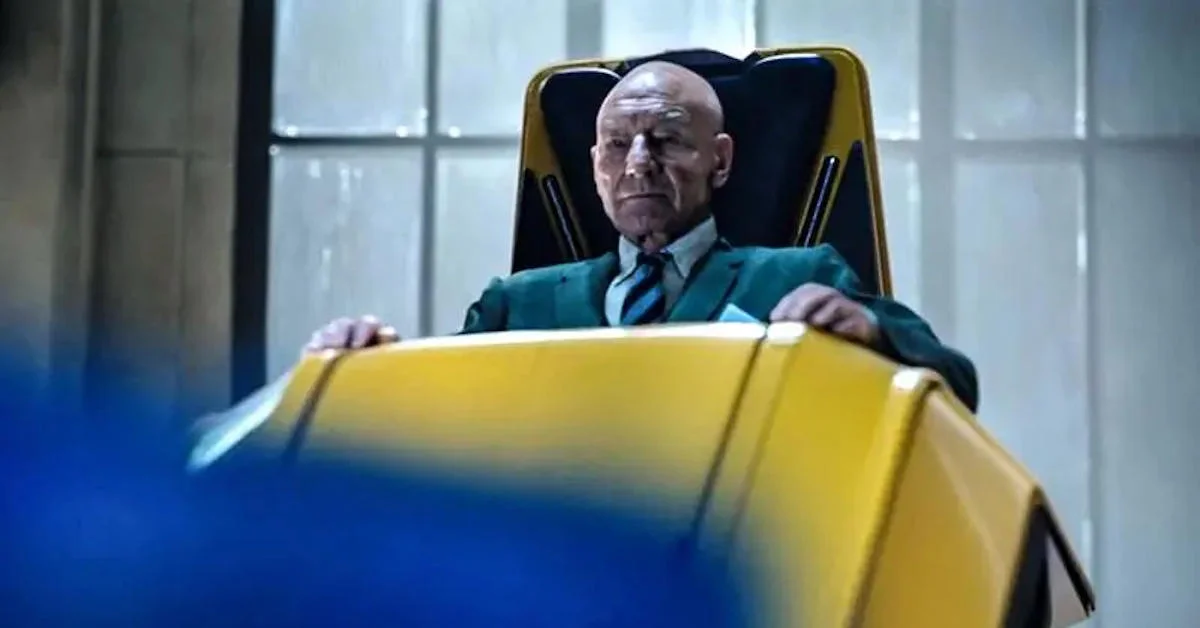(A version of this article was shared with Laughing Place and published on October 20, 2023.)
Since the outset of the Marvel Cinematic Universe (MCU) in 2008, Marvel’s storytellers – led by president and chief MCU mastermind Kevin Feige – have wowed audiences around the world with creative storytelling and colorful characters. Both casual and hardcore comics fans saw the gradual rollout of the Avengers and the transition of stakes across the first three phases of the overarching galactic story – all of which culminated in the blockbusting films Avengers: Infinity War and Avengers: Endgame. Between the two films, Marvel has grossed close to $5 billion.
The critical success of the MCU peaked with the climax of what has come to be known as the “Infinity Saga.” Since Avengers: Endgame hit the big screen in 2019, subsequent Marvel films and television series have been met with varying degrees of success – both critically and commercially. At times, Marvel has been accused of running low on new ideas and employing less inspired writing in the creation of new content. Some might call it a “poverty of imagination” to quote a certain “God of Mischief.” Let’s look at a few of Marvel’s favorite tricks, and see how they could be cheapening the impact of their stories.
Super Soldiers
“Everyone can be super! And when everyone’s super…no one will be.” – Syndrome, The Incredibles
It’s no secret that superheroes are super for a reason. They possess unique abilities that allow them to perform superhuman feats. What makes them interesting is how they still struggle with human-scale feelings and emotions, despite their physical powers. Tony Stark battled arrogance and addiction. Hulk struggled with self-control. Black Widow was haunted by the terrors of her past. These human element concepts – first introduced by Disney Legend Stan Lee – are a valuable part of comic storytelling, and are deservedly cherished.

Part of what makes a character’s physical power compelling is the idea that they are not all-powerful. Much like their flawed personalities, their physical power has a fragility as well. Superman was weakened by Kryptonite. Tony Stark had metal shrapnel constantly threatening his heart. Inside his Iron Man suit, Stark was physically just a regular human. We as fellow human beings can relate to physical and emotional limitations. Conversely, other characters – like Thor and Thanos – have seemingly limitless power, and as such, their stories don’t feel quite so compelling.
With the advent of super soldier serum in Captain America: The First Avenger, the number of overpowered and seemingly indestructible heroes has grown substantially. This began with Steve Rogers/Captain America, continued with Bucky/Winter Soldier, and has since ballooned into far too many all-powerful heroes and villains. Captain Marvel, Wanda Maximoff, and Kang the Conqueror all possess excessive abilities, with no obvious physical flaws.

As if the flood of overpowered characters wasn’t enough, Marvel recently jumped the shark on this concept by introducing the ability of DNA enhancement. The recently concluded Secret Invasion series saw two alien Skrulls – Gravik and G’iah – receive incomprehensible physical enhancements thanks to a host of super DNA, known as “The Harvest.” The final showdown between the two characters was a “greatest hits” collection of many favorite hero and villain powers, all stitched together into two mashup characters. Both characters seemed to instantly master their new abilities, yet neither stood out as being particularly unique or compelling. The final battle was a punching, stabbing, crush-fest ending as quickly as it started, and without much emotion or meaning.
How many superpowered characters must continue to evolve to keep up with the progression of galactic stakes? Walt Disney once famously said “You can’t top pigs with pigs.” In that case, Walt was referring to his second animated short about the Three Little Pigs called The Big Bad Wolf (1934), which fell short in popularity compared to the massive success of the original. Similarly, how much can Marvel keep trying to top itself before overpowering their audience? This power progression is close to meeting its ceiling. It’s time to ground things and reset.
Phenomenal Cosmic Power
One of the most shocking revelations in season one of the Loki series (2019) was the jaw-dropping reveal of a handful of powerless Infinity Stones in a desk drawer at the TVA. These Infinity Stones – which were at the heart of MCU’s “Infinity Saga” – were simply tucked away as no longer relevant. Mere trinkets. How? There’s a whole theory and explanation on how this could be. The question I want to ask is “Why?” Phases one through four of the MCU were carefully (and expertly) crafted to culminate in an epic two-part film series, which satisfyingly concluded the Infinity Saga. Why take that success and cheapen its meaning by dwarfing it with another power that renders the Stones (and their powers) meaningless? Instead, why not build on the foundations forged in Phases one through three, while also moving the story forward in different directions? The next best story in the MCU doesn’t have to hold more power and galactic influence than the previous story. The constant “upping the stakes” with stronger characters and more far-reaching consequences is not sustainable.

One aspect I enjoyed about the first two Ant-Man films was the smaller scope of the story. While there may be bigger pieces rooted into those films, the overall scope of the films were more local, and therefore easier to grasp and connect with. By contrast, the third Ant-Man film, Quantumania, goes in the complete opposite direction. By squaring off against Kang the Conqueror in the quantum realm, Quantumania magnifies the scale of influence beyond that which can truly be appreciated by fans. Bigger is not always better. I’ll take Scott Lang in San Francisco over galactic stakes in the confusing quantum realm any day.
Time Travel
Hank Pym is one of my favorite secondary characters in the MCU. Not only is he brilliant, he is also quite down to earth and relatable. When it comes to the “science” part of the MCU’s science fiction, Pym is second to none, with his crowning achievement being the creation of Pym particles, capable of shrinking or enlarging objects (and living beings).

But wait, there’s more! Not only do Pym particles create a change of size, they also curiously facilitate time travel. We all know the science fiction of time travel is shaky at best. When the past is changed, the future is – by relation – changed as well. The butterfly effect of one well-intentioned maneuver (or the three coordinated time/space jumps performed by the Avengers in Avengers: Endgame) is perfectly fine. However, other potential, unintended consequences are often lazily cast aside by writers and storytellers. They are either inconvenient or not interesting, and therefore not included in the story. We as an audience only get half the story. If Marvel wants to change an unpopular direction of a current story thread, what’s to stop creatives from “revisiting the past” of time travel to pluck out relevant (and previously ignored) consequences of time travel in previous MCU films?
By the way, Hank Pym isn’t the only one who can create time travel in the MCU. Dr. Strange, with his mastery of time travel spells, treats the concept of chronological time more like a suggestion than a rule (and in addition to traveling through time, Dr. Strange can actually change events and rewrite history). In the Loki series, the Time Variance Authority (TVA) runs rampant through time and space. Which brings me to the next – and possibly largest – loophole in the MCU.
The Multiverse
Ok, where do we start when talking about the Multiverse? Let’s try to define it. I can best describe the concept as a collection of alternate universes sharing a universal time/space hierarchy. These universes diverge from a common origin, then exist separately, with the ability to impact – and even destroy – each other. It’s a hard concept to grasp, and even harder to explain. I feel like the more I learn about it, the less I actually understand it. I spent a whole article trying to figure out the Multiverse in 2021, if you want to check it out. Rather than rehash too much of it here, let’s suffice to say it’s here to stay – at least for now. It offers endless possibilities (literally), but it is also fraught with peril.

Beginning in 2016 with Doctor Strange, the MCU has been selectively including the Multiverse concept in its films. Avengers: Endgame put the concept to critical use in 2019, restoring the world after Thanos’ Snap. The Loki series blew the doors off the concept in 2021 and thoroughly confused many fans (including me) in the process. With season two of the series well underway, the multiverse confusion continues, even among characters in the stories themselves. In Loki, we constantly see Agent Mobius, other TVA agents, and even Loki himself looking confused and trying to keep up with the ever-changing reality of the multiverse. If Marvel’s characters don’t even have a firm grasp of the concept, how are we as fans to have even half a chance of understanding it?

On the positive side, the Multiverse, with its infinite branches, offers limitless storytelling opportunities. Wanna see what would happen if Peggy Carter became Captain America instead of Steve Rogers? How about the idea of Thor as an only child, with no mischievous little brother to push around? Marvel’s animated What If…? series has you covered for these and many other possibilities. While not my favorite MCU offering, What If…? does an excellent job at having fun with the Multiverse and letting creative juices flow. But it does so within singular, contained story ideas, not needing to maintain a continuity with the greater MCU.
Recently in the Multiverse
Beyond Loki, MCU fans spent a few more moments with several Spider-Men in 2021’s Spider-Man: No Way Home. For as good as the film was, it also felt like a huge cash grab, taking several popular iterations of Spider-Man in the same film to appeal to massive audiences (and crushing box office success).

Next, Marvel teased audiences with a taste of the X-Men and the Fantastic Four in 2022’s Doctor Strange in the Multiverse of Madness. Part of this may have been Disney taking a few of their recently acquired 20th Century Studios properties out for a spin. But Marvel was also likely workshopping a few characters in a sort of multi-hundred-million-dollar focus group to test audiences worldwide. Will these characters return, or were they simple flashes in the recent multiversal pan – coming and going with little to no consequence? Storylines that go nowhere and die on the vine will frustrate viewers, who may come to resent having invested their time in a story that was not satisfyingly reconciled.

Writers Block?
Beware Marvel, for the Multiverse can easily become a way for lazy storytelling and backdoor retconning.
Wanna get Robert Downey, Jr. back into the MCU? Let Loki open another multiversal thread, where Iron Man didn’t perish at the hands of Thanos.
Wanna see Wolverine in the MCU already? Talk to Dr. Strange – he’ll figure it out.
These notions sound tantalizing, but outside of a single What If… episode, they could tragically serve to cheapen the weight of all the events which have already happened in the MCU. And once we get used to the idea that unappealing scenarios can simply be rewritten to play better with the fanbase, then nothing carries much meaning anymore.
The Multiverse is a complicated concept which offers limitless possibilities. But also presents treacherous pitfalls when it comes to storytelling traps. This concept should be used thoughtfully, and sparingly, to avoid audience fatigue and frustration.
The Snap
Those final moments of Avengers: Infinity War, when Thanos snaps his universe-changing fingers, led to some of the most vividly disturbing scenes we’ve ever seen. Many of the heroes we’d grown to love (not to mention half of all sentient life in the universe) simply wasted away to dust. Those who survived spent the next five years in a spiral of depression and emotional agony.

These moments – while residing inside the genre of science fiction – were incredibly impactful on a human level. The Snap changed the course of MCU history forever, with permanent and painful consequences (until Avengers: Endgame was released a year later). In the aftermath of the Snap, MCU stories were able to take new directions.
While the Snap directly led to many meaningful moments, we’ve also seen scenarios where the Snap has become a crutch for storytelling shortcomings. Characters like Thor’s Jane Foster, and Spider-Man’s Aunt May and MJ, have been written into recent stories with no real explanation of their recent timeline, other than to state somewhere in their respective stories that they had indeed been Snapped (and have now returned).
Most recently, Secret Invasion made a point of stating (many times) that Nick Fury had “lost his touch” since returning from the Snap. How exactly did he lose his touch? Did Fury’s talents fall victim to the Snap, or did others ascend in competency during his absence and fill in the voids left by others? These are interesting questions, which deserve well thought out answers. Marvel – don’t just tell us what happened (or even worse, don’t just tell us “it was the Snap” and expect us to simply swallow it and be satisfied). Show us! We are here to see it!

Skrulls
As we discussed above – one of the properties that makes characters relatable and believable is the idea that they are not perfect, and they make mistakes. They may be frustrating at times, but that’s all part of a well written story. When characters behave in ways we either don’t like or otherwise question, the reasons for the behavior need to be well balanced with compelling meaning.
Enter Skrulls. This displaced alien race first entered the MCU via 2019’s Captain Marvel. What makes the race both interesting and terrifying is that they have the ability to shapeshift into other people and creatures, being physically indistinguishable save for blood type. Since Captain Marvel, Skrulls have gone on to selectively plant themselves in places of strategic value. In 2019’s Spider-Man: Far From Home, Nick Fury was shown to be a Skrull, which could have offered an interesting counterpoint to his absence during the Snap. That sounds like an interesting plot point, though it wasn’t well written into the MCU thread so thus far it has fallen flat.

Then, in 2023, Secret Invasion saw Skrulls running wild on Earth. In this series, it is revealed that there are approximately a million Skrulls on earth, secretly taking the place of humans in all walks of life – common folk, scientists, lawmakers, and world leaders. The most notable person shown to have been impersonated by a Skrull was one of our heroes, James “Rhodey” Rhodes. Now a military general, Rhodes (or at least the Skrull version of him) has a great influence on world events. When we see the “real” Rhodes revealed at the end of the series to have been in a Skrull-induced catatonic state, our hearts break for him.
The careless use of Skrulls in the MCU could bring up two major issues.
First – similar to the overuse of the Multiverse, the overuse of Skrulls could cheapen the emotional impact of events which have occurred (or will occur) within the MCU. GOing back to Rhodes – when did he get overtaken by a Skrull? Was the Rhodes who attended his friend Tony Stark’s funeral the actual Rhodes, or was he a Skrull at that point as well? That monumental moment at Stark’s funeral takes on a whole new feel if there is an imposter among those grieving by the lake.
Second – and again similar to a Multiversal problem – a simple “switcheroo” of a character for a Skrull version of that character could encourage lazy writing. Characters who previously lived their story on a certain path can be changed drastically, with a simple explanation that they were a Skrull all along. While that shift can be true and complete from an X’s and O’s perspective, it can also be lazy and unfulfilling from an emotional perspective when employed without proper care and attention. Marvel writers should take great caution in their decisions to plant Skrulls throughout the MCU.
Marvel’s tried-and-true plot devices have led to many compelling MCU stories, not to mention unparalleled box office success. Each of these devices has their place, and should continue to be used in future storytelling, but with care and caution. If Marvel sticks with these core storyline anchors, without overusing them, while also introducing new concepts, the future of the MCU will remain bright for years to come.
Which of these MCU plot devices do you enjoy? Do any of them frustrate you? Let me know with a comment or direct message on social: Instagram Facebook X




